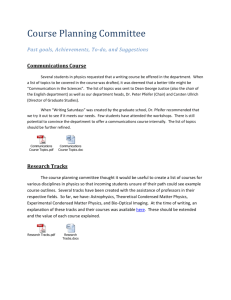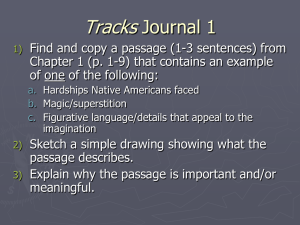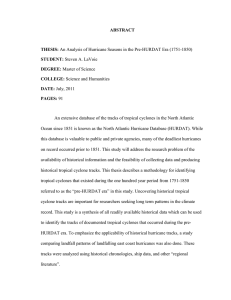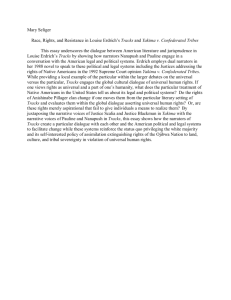ABSTRACT: 2016 ELAM Institutional Action Project Symposium
advertisement
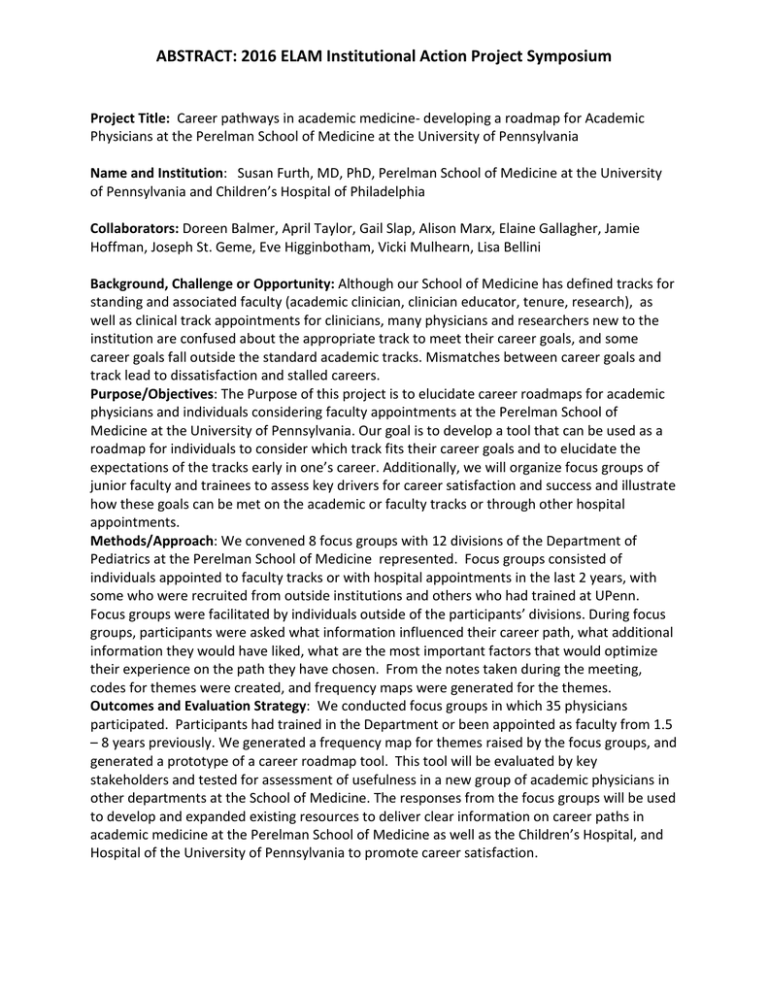
ABSTRACT: 2016 ELAM Institutional Action Project Symposium Project Title: Career pathways in academic medicine- developing a roadmap for Academic Physicians at the Perelman School of Medicine at the University of Pennsylvania Name and Institution: Susan Furth, MD, PhD, Perelman School of Medicine at the University of Pennsylvania and Children’s Hospital of Philadelphia Collaborators: Doreen Balmer, April Taylor, Gail Slap, Alison Marx, Elaine Gallagher, Jamie Hoffman, Joseph St. Geme, Eve Higginbotham, Vicki Mulhearn, Lisa Bellini Background, Challenge or Opportunity: Although our School of Medicine has defined tracks for standing and associated faculty (academic clinician, clinician educator, tenure, research), as well as clinical track appointments for clinicians, many physicians and researchers new to the institution are confused about the appropriate track to meet their career goals, and some career goals fall outside the standard academic tracks. Mismatches between career goals and track lead to dissatisfaction and stalled careers. Purpose/Objectives: The Purpose of this project is to elucidate career roadmaps for academic physicians and individuals considering faculty appointments at the Perelman School of Medicine at the University of Pennsylvania. Our goal is to develop a tool that can be used as a roadmap for individuals to consider which track fits their career goals and to elucidate the expectations of the tracks early in one’s career. Additionally, we will organize focus groups of junior faculty and trainees to assess key drivers for career satisfaction and success and illustrate how these goals can be met on the academic or faculty tracks or through other hospital appointments. Methods/Approach: We convened 8 focus groups with 12 divisions of the Department of Pediatrics at the Perelman School of Medicine represented. Focus groups consisted of individuals appointed to faculty tracks or with hospital appointments in the last 2 years, with some who were recruited from outside institutions and others who had trained at UPenn. Focus groups were facilitated by individuals outside of the participants’ divisions. During focus groups, participants were asked what information influenced their career path, what additional information they would have liked, what are the most important factors that would optimize their experience on the path they have chosen. From the notes taken during the meeting, codes for themes were created, and frequency maps were generated for the themes. Outcomes and Evaluation Strategy: We conducted focus groups in which 35 physicians participated. Participants had trained in the Department or been appointed as faculty from 1.5 – 8 years previously. We generated a frequency map for themes raised by the focus groups, and generated a prototype of a career roadmap tool. This tool will be evaluated by key stakeholders and tested for assessment of usefulness in a new group of academic physicians in other departments at the School of Medicine. The responses from the focus groups will be used to develop and expanded existing resources to deliver clear information on career paths in academic medicine at the Perelman School of Medicine as well as the Children’s Hospital, and Hospital of the University of Pennsylvania to promote career satisfaction. Career pathways in academic medicine at Penn Medicine and the Children’s Hospital of Philadelphia- a roadmap for Academic Physicians Susan Furth, Doreen Balmer, April Taylor, Gail Slap, Alison Marx, Elaine Gallagher, Jamie Hoffman, Lauren Tanzer, Kristi Ettien, Anne Reilly, Robert Shaddy, Kathy Shaw, Joseph St. Geme, Gail Slap Background Governed by the University, the PSOM Full-time Faculty include Standing (Tenure, Clinician Educator (CE)) and Associated faculty (Research, and Academic Clinician (AC)) tracks. Tenured faculty are research focused, CE combine research and clinical care and AC faculty are focused on clinical care and teaching. Growth in the Health System has caused rapid increase in the number of CE and AC faculty providing clinical care. Fig 1. Objectives • To develop tools to clarify expectations and skill sets needed for success on each track so that faculty are appointed on the appropriate track • To identify key drivers of career satisfaction in career pathways on faculty and non-faculty tracks • To embark on initiatives to promote career satisfaction among faculty and health system clinicians Methods Recently, caps have been set for the proportions of the standing and associated faculty that can be CE and AC track. Current projections based on recent faculty growth, suggest that growth in some tracks will soon exceed these caps (Fig 2). Therefore new faculty appointments to these tracks will need to be carefully considered, as capacity on the tracks will be curtailed. Fig 2. • Convened 8 focus groups • Participants asked what influenced career path, what additional information they would have liked, and what factors would optimize their experience • Themes were identified from the transcripts • Frequency maps generated for themes • Prototype career pathway map developed • Pathway map will be pilot tested, implemented and metrics developed and tracked to assess impact Results • Focus groups in Department of Pediatrics • Participant roles: AC – 23, CE/Tenure – 10, Clinical role – 2, at Children’s Hospital 1.5 – 8 yrs • Themes identified: • Mentorship key • Need guidance on how to develop a niche • Confusion about differences between academic tracks • Lack of clarity about benefits • Lack of clarity on non-faculty options • Needs for flexibility and career evolution over time Results • Factors influencing career choices Developed Prototype Pathway Tool • Research vs Clinical focus • Desire to stay at institution • Division chief advice • Job available • Factors that would increase satisfaction • Clearer understanding of tracks • Greater sense of value for roles, including patient care • More opportunities for teaching • Valuing contributions other than publications/ grants • Opportunities for track switching • Recommendations for change • Reminders/ info about staying on track • Individual Coaching/Feedback q 6-12 mos in role • Lists of resources/key contacts • Networking opportunities across University • Dissemination of distinct timeline and “pathway to success” Next Steps • Test pathway tool with Department and SOM leadership, Committee on Appointments and Promotions, implement its use in FY17 in Department of Pediatrics • Create milestone document for career development on faculty tracks • Identify drivers of career satisfaction across faculty and non-faculty roles • Develop initiatives to address identified needs • Develop assessment metrics for impact • Disseminate tools to other departments in PSOM PrintedForum by Presented at the 2016 ELAM Leaders

